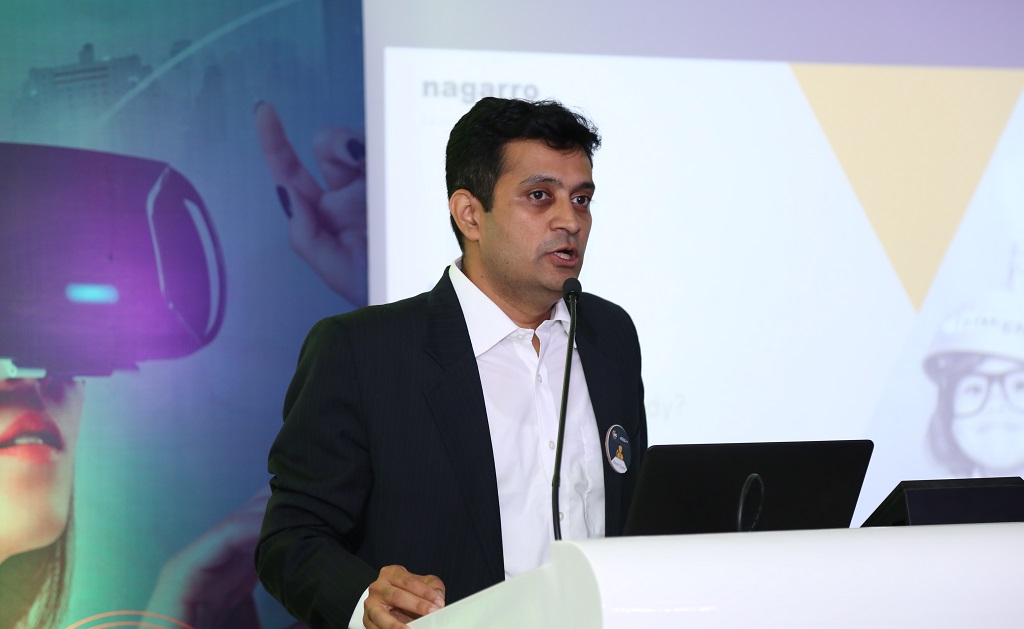The COVID-19 pandemic has left no industry untouched, including railroads. Even though the industry is at the forefront of providing essential services in times of crisis, its overall growth has slumped. We sat down with Ritesh Gupta (Nagarro’s Practice Lead for Freight Transportation), to analyze how the industry perceives this pandemic as a challenge and how technology is helping railroads come back on track.
How has the current situation impacted the railroad industry?
First of all, I want to emphasize that railroad workers have been at the forefront with other essential service providers in transporting essential commodities, relief material, and life-saving drugs. In these unfortunate times, we are grateful to them for their exceptional efforts.
Compared to last year, China’s rail freight volumes were up by 2.4 percent from January to April despite COVID-19. However, it is not the same story everywhere.
In its World Economic Outlook (April 2020), the International Monetary Fund has projected that the global economy will shrink by 3% in 2020. Europe is showing a more than 10% decline in industrial production between February and March 2020. Europe’s freight transport, including rail is also reportedly witnessing a significant slump.
Compared to Europe, where rail freight is less than 20% share, the US rail network accounts for about 40% of its freight moves by ton-miles. US railroads’ impact is significantly visible because of the data available. As per a recently published report shared by the Association of American Railroads (AAR), US carload and intermodal originations combined for April 2020 vis-à-vis April 2019 are down by over 21% with over 25% decline for carloads. This is probably the steepest decline in history ever since the data began getting published.
The immediate situation is alarming, and might even require extreme measures like layoffs, emergency financing, and other steps to maintain cashflow and financial prudence.
Is the impact of this crisis permanent or temporary?
In the medium to long term, we know that the railroad industry is resilient and will bounce back. Industry leaders are showing cautious optimism, with projections of carload volumes expected to pick up near base levels.
However, currently there is a lot of disruption. The traffic patterns could change; for example, some routes are under stress while some others have excess capacities. This is causing re-alignment in traffic routes and even in the types of currently operational carloads. Operating ratios would continue to be impacted.
This sector, especially its small and medium enterprises, would require support from institutions and governments through social, economic, and policy initiatives.
Today, as the most environment-friendly way to move freight over land, I expect the railroad industry to continue getting attention from individual governments.
What kind of paradigm shift would be necessary for the railroad industry to get back on track?
The industry should look at ways to consolidate infra spends, use assets more prudently, and possibly look at better supply chain optimization and integration for first and last mile with joint intermodal models.
From a technology point of view, the data shows that most of the venture capital is spent on traffic/transport solutions. The focus will continue to be on platforms. There are opportunities to create a marketplace similar to other industries.
Besides, emerging technologies will continue to play the desired role in the operational efficiency initiatives.
In the next few months, companies will seek all opportunities to ensure financial prudence to maintain positive cash flow and look at innovative ways to improve the operating ratio.
That brings me to our next question: How do you think technology will help?
From a technological standpoint, we have seen many digitization-driven initiatives showing varying degrees of success - such as the Internet of Things (IoT) with sensors, distributed ledgers with blockchain, AI and big data implementations, image processing with portals and drones, cloud platforms, and human-machine interactions. All these initiatives have focused on creating platforms, improving operational efficiencies, and on automation to minimize possible human errors. Some examples for infra (wayside and yards) and assets (locomotives and railcars) involve a combination of these technologies to solve real business problems like enabling automated train control (PTC), computerized inspections, advanced fuel management systems, and automated scheduling.
I think the thrust would continue to be on digitization and mobility 5.0 but with its focus now shifting from technology as an enabler or cost centre to technology as a disruptor. Also, COVID-19 provides a unique challenge and an opportunity for greater emphasis on automation at all levels – infrastructure as a service and infrastructure as a platform, assets as service and platform, and the usual - software as a service and platform.
In the long term, the other themes with infrastructure investments will continue to wield a significant business advantage. However, irrespective of whether it is rolling stock, signaling, infrastructure, or operations, the immediate winners would be those technologies and solutions that help preserve cash flow, help increase revenue or increase operational efficiency with a quick ROI.
Can we mitigate human touch completely?
I think this will neither be the case nor the intention. Despite the pandemic, we saw that railroad operations were declared as a part of essential services, and people were on the field, helping us move forward.
There are ways technology is proving helpful, and this situation has opened the minds of the sector towards technology.
For example, the corporate staff for a railroad was quick to implement smart and collaborative technology solutions such as Office 365, which allowed everyone to work and collaborate remotely.
On the field, technology with newer solutions is playing an important role in maintaining social distancing and in operations during challenging situations. This is where our Connected Worker solution is gaining increased popularity among our customers and prospects.
Our solutions are built around wearable technology (smart glasses and augmented reality) with use cases like ‘I see what you see’ and with offline sync capabilities that are proving to be excellent in increasing on and off field collaboration of field agents, office agents, and experts.
Such solutions will enable the field worker to go hands-free and focus more on the sophisticated tasks like setup and maintenance of machines. These smart devices offer features and performances comparable to the handheld devices and are even in the same price range. Our solutions have helped in increasing the productivity and accuracy of on-field workers by fetching the right information and getting support from remote experts in real-time.
Some railroad companies would still have cold start issues or adoption challenges with AR devices. In such cases, similar solutions can be delivered on other form factors like smartphones.
How can Nagarro’s technological prowess contribute towards improving the overall situation?
Apart from what our Connected Worker solution offers, Nagarro is also well-equipped to help customers with solutions for revenue generation and higher efficiency. Offerings such as the accelerators for Intelligent Maintenance and Smart Fleet or workshops on Smart Invoicing will go a long way in addressing customer pain points.
Along with these innovative solutions that we customize as per customer requirements, we continue to co-innovate, develop, digitize, and transform. We are currently working closely with our customers and partners in the industry and are leveraging our domain expertise to continuously improvise as a strong, customer-centric system integration partner. We are extending our full support during the current crisis and will continue to go the extra mile for the benefit of the industry and our customers.
Thank you for sharing your insights with us, Mr. Ritesh Gupta. Here’s hoping for better times!




